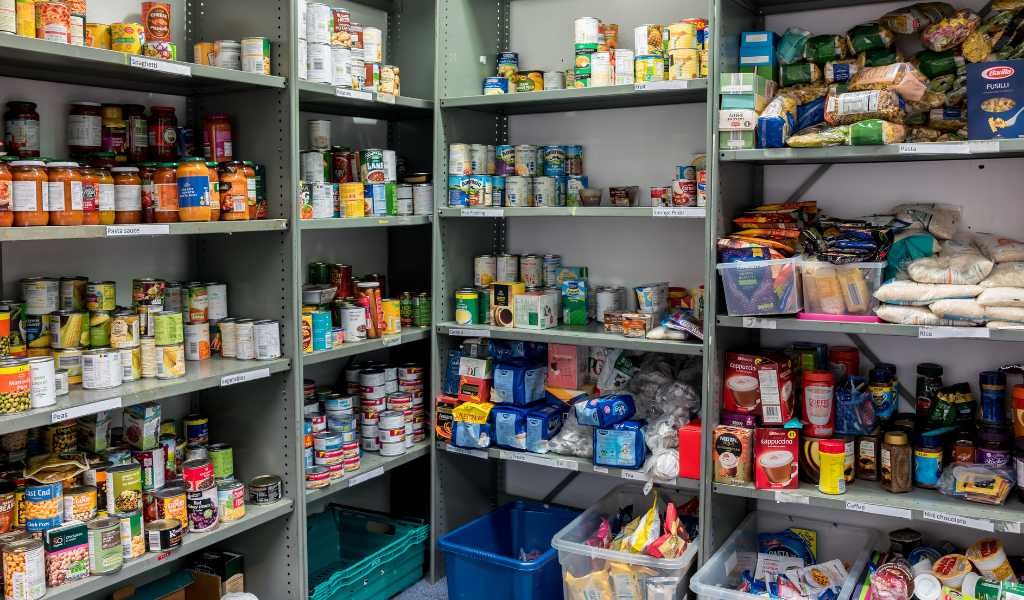Innovative community projects provide more dignity for people in food need than traditional foodbanks, and provide a choice of locally sourced healthy food, new research suggests.

The city-based projects, created to fill the gap left by insufficient state support, are often run informally, cater for diverse, local need and replicate a regular shopping experience. The research, by the Institute of Development Studies and the Food Equity Centre, indicates that they provide a better experience for those in food insecurity than traditional food banks, which have been the dominant answer to food need in recent years.
Unlike food banks, the five projects studied in Brighton (UK), Cape Town (South Africa), Montpellier (France), Sao Paulo (Brazil) and Toronto (Canada) do not operate on a means testing or referrals basis and source local and culturally appropriate food – catering for different dietary requirements.
Rising food insecurity
Rising food insecurity globally has seen a huge increase in the use of food banks in recent decades. The UK has been referred to as a ‘food bank nation’, having gone from 35 food banks operated by the Trussel Trust in 2010, to a total of 2,800 run by charities across the UK by 2024. The demand for food banks in France has also risen in recent years as food prices have increased. Research in 2023 found that 2.4 million French people were benefiting from food banks at the end of 2022 – three times more than a decade ago. In Canada, two million people visited food banks in 2024. Foodbanks have been established in South Africa over the past 15 years and they also exist in Brazil, although to a much lesser extent.
Dr. Ronald Ranta, School of Law, Social and Behavioural Sciences, Kingston University and co-author of the report said:
‘Food insecurity is driven primarily by poverty and inadequate social security. The question of how to respond to food insecurity, in the absence of direct government intervention, has long been a central dilemma for those working in the area. Food banks have played a vital role in this regard, but despite the huge numbers operating in many countries, levels of food insecurity don’t seem to going down. In fact, despite the increase of food banks in countries such as Canada and the UK, levels of food insecurity have gone up.
“Without adequate government intervention, it’s clear that we need to look at alternative models and the projects we studied in five countries offer insights into how food projects can work differently, responding more keenly to local need, broadening access, and helping to decrease the shame or stigma associated with food insecurity.”
Lídia Cabral, Research Fellow, Institute of Development Studies and co-author of the report, said:
“This study provides an account of the power of community-led innovation and solutions born from lived experience and solidarity, rising in moments when governance fails. But while grassroots innovation and action is essential for transforming our food systems, it does not absolve governments of their responsibility to ensure dignified food access for all. This includes empowering community organisations and projects as frontline innovators by providing the funding and supportive infrastructure they need to thrive.”
Critics argue that the food bank model only offers short-term emergency response to what is for many a long-term problem and have limited choice or dietary or culturally sensitive food. Means testing required to access food banks also can require users to prove their level of need, which can result in a lack of dignity and contribute to feelings of shame and stigma.
Empowering marginalised groups
In contrast, the researchers found that the grassroots food projects in all five cities helped to empower marginalised groups in their area, build community alliances and shift perspectives on food insecurity. They were also able to offer more culturally sensitive food and experiences.
Dr Suleyman Demi, Assistant Professor, Algoma University, Canada, and co-author of the report, said
“To many Indigenous, Black and people of colour, food is not only for nourishment but also about identity and cultural expression. Hence, attainment of food security should not only serve the nutritional needs of people but must also be culturally appropriate and meet the spiritual needs of the people”.
The research also found common challenges among the initiatives across the five different cities, which include rising food prices, the reliance on donated and surplus food. Shortage of food storage and fridges. Overall, all the organisations studied were in quite precarious situations and reported that funding has been the biggest challenge since funding during the Covid-19 pandemic ended.
While the levels of food insecurity persist, and governments fail to sufficiently address food inequities throughout food systems, the researchers recommend that grassroots organisations in different countries learn from each other to help find alternatives to the prevailing food bank model.
